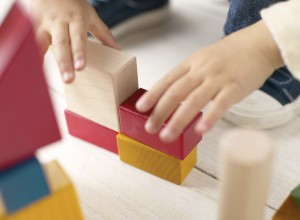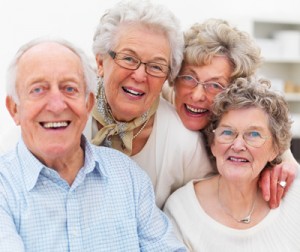
One of our Talking Matters Facebook friends asked for a post on "stranger danger" for ASD kids. Leah wrote " I have an idea for a blog post - Stranger danger awareness for kids on the spectrum. I'm trying to teach my ASD son and it's SO hard because he is so literal. My NT kid gets it, but he doesn't." Tricky one Leah, but lets have a try:
The difficulty with teaching this concept to ASD kids is that they are very concrete and literal learners as Leah pointed out. Show them a picture of a stranger and they will think that is what all strangers look like. Relationships and social rules change over time and in different situations and it is impossible to teach all the possibilities. Most kids work it out instinctively but for ASD kids it is very confusing.
One technique is the social circles technique. The idea of this activity is to teach children that there are different levels of familiarity for different people.
Start with a large piece of paper and draw a circle in the middle. Write your child's name in this circle and perhaps paste their picture as well. This circle is "me".

Next draw a second circle around the first circle. This second circle is "family". Write the names or paste the pictures of very close relatives in here, parents, siblings, grandparents, close aunts or uncles etc. Talk to your child about what interaction is appropriate for these people. These are the people that it is OK to hug or kiss and you can sit on their lap or hold their hand, whatever you feel is appropriate for your family and your child.
The next circle is "friends and neighbours". Put some names or faces in here of people that you know and again talk about what is appropriate. These are people that you may speak to and you might wave, shake hands, give a high five. They might pat you on the back or even give you a hug or a kiss on the cheek if this is OK with your child.

Most discussion of this model suggest that the next circle is "strangers" people that you never touch. It may be useful to add an extra circle here and perhaps call it "community helpers". These are people that you may need to talk to sometimes. These might be people that work at your school, doctors, policeman, fireman etc. They will usually have a name tag or a uniform. You might want to talk about the different situations when you might need to talk to or even touch these people.
The last outer circle is "strangers". These are people that you don't know. Talk about what is OK and what is not. It is OK to say "Hi" and smile or wave but you should not touch them or let them touch you. You should stay at least an arms length away. You should never go with them anywhere or get into their car. You should not take a treat or gift from them.
Teach your child that if a stranger tries to touch them they should yell and run to a person who is a family, friend or community helper (someone in a uniform or who has a name badge) and tell them what happened.
The difficulty for children with ASD will be to understand who fits in the last category because they are concrete thinkers and you are not able to show them a picture of every stranger they are going to meet.

One thing to try is to collect pictures of people in each of the categories and practice sorting them. Repeat the activity a number of times and each time you do it, change the pictures of those in the "stranger" circle so that they are pictures your child has not seen before. This will stop your child from memorising the "stranger faces" and thinking that only these people are strangers. It will help them realise that you do not know what a stranger will look like before you see them. Make sure that you include people of different ages, genders and appearance in this category. You can download pictures of people from the internet and mix them with photos of people you know. Print them all the same way so that familiar people are not the "glossy photos" and strangers the ones on printer paper!
You could also make a chart at home and put pictures of people in the different circles. You might want to use symbols for community helpers rather than photos so that you child understands that all policeman are OK etc. You might want to put "everyone else" in the stranger category. Having a chart allows you to talk about changes. If Tom marries Auntie Jackie then he might move from stranger to friend, or maybe friend to family and so on. You can use the chart to help your child to help your child prepare for events. "Sam and Sally are coming for tea. You haven't met them before but Mum and Dad know them well so we can put them in our friends circle". Thank goodness for Facebook as an endless source of photos of people you know but may not have a recent photo of!
Also help your child generalise by talking about this concept when you are out and about. At the playground you might say "There is a person we have not seen before. They are in our stranger circle so we can smile but we won't go and talk to them". "There is Jack from school. He is in our "friends" circle so you can go and say "hi" and play with him on the swing if you like". At the shops you might say "There is a shop worker in a uniform. She is a community helper so if you get lost it would be OK to ask that person for help."
You may need to repeat these activities many times to help your child develop a full understanding and continue to discuss these concepts in different settings so they continue to remember and generalise to new situations.
One final but important point is to teach your child about "bad touch". Explain to your child that no one should touch you on the parts of your body that your your bathers cover. If they try to you should yell "no" and go to an adult and tell them. An exception might be a doctor or nurse or for some children there may be people that help them with toileting and you can explain to your child what is OK in these situations. You might want to use a picture to help your child to understand the "no touch area".
This is a difficult concept to teach but sadly is needed to keep children safe. For more information on social circles see the following link:
http://www.autism-help.org/communication-social-circles-autism.htm
Talking Matters provides speech pathology, occupational therapy and psychology services to kids of all ages in Adelaide, South Australia. To find out more about our team and what we do browse our website and see how we can help your family.
There is also more information on kids with special needs and how to support them on our Facebook page, Twitter, or Pinterest.
Related posts:
Social skills
Managing emotions
Think and feel
Making Choices
Visuals for older ASD kids
Visuals for younger ASD kids
Occupational therapy
Autism Awareness
Talking diagnosis
Calm, alert and learning
What is Asperger's?
What is PDD-NOS?
Caring for families
Related Blog Posts
If you liked this post you may also like:
Asking Questions
Weighted products
20 tips for social skills
Using PICTIONARY to Grow



